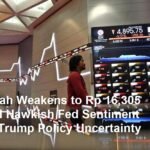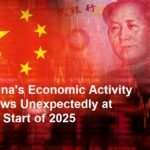NEW YORK, USA — Former U.S. President Donald Trump has issued a stark warning to the BRICS bloc (Brazil, Russia, India, China, and South Africa), vowing to impose tariffs of up to 100% on their exports to the United States if the group moves forward with plans to introduce a new currency to rival the U.S. dollar. The threat, made during a campaign rally in Ohio on Tuesday, underscores escalating tensions over the dollar’s dominance in global trade and the geopolitical rift between Washington and emerging economies.
BRICS’ Currency Ambitions: A Challenge to Dollar Hegemony
The BRICS nations, representing over 40% of the global population and 25% of world GDP, have long discussed creating a shared currency to reduce reliance on the U.S. dollar. Proponents argue that a BRICS currency could:
- Diminish Dollar Dependency: Mitigate vulnerabilities to U.S. sanctions and exchange rate fluctuations.
- Boost Trade Efficiency: Facilitate smoother transactions among member states and allies.
- Counter Western Influence: Establish a multipolar financial system less dominated by Western institutions.
While no formal framework has been finalized, discussions gained momentum in 2023, with Russia and China advocating for accelerated plans amid ongoing U.S. sanctions. A BRICS working group is expected to present a feasibility report at the bloc’s 2024 summit in October.
Trump’s Ultimatum: “Defend the Dollar at All Costs”
Trump, the presumptive Republican nominee for the 2024 presidential election, framed the potential BRICS currency as an existential threat to U.S. economic supremacy. In his speech, he declared:
“If these countries try to replace the dollar with their phony money, we’ll tariff their products at 100%. They’ll be begging to use our currency again.”
The proposed tariffs would target key BRICS exports to the U.S., including:
- Chinese electronics and machinery
- Indian pharmaceuticals and textiles
- Brazilian steel and agricultural goods
- Russian minerals (despite existing sanctions)
Trump’s campaign team later clarified that the policy would extend to “any nation aiding this anti-dollar scheme,” potentially affecting non-BRICS allies like Iran or Saudi Arabia.
Economic and Political Implications
- Global Trade Warfare
A 100% tariff would effectively block targeted goods from entering the U.S., disrupting supply chains and inflating consumer prices. Analysts warn this could trigger retaliatory measures, mirroring the 2018–2020 U.S.-China trade war but on a broader scale.
- U.S. Inflation Risks: Tariffs on Chinese tech or Indian generic drugs could strain already fragile U.S. supply chains.
- BRICS Countermeasures: China might restrict rare earth exports, while Russia could leverage energy partnerships with Europe.
- Dollar Dominance Under Threat
The dollar accounts for 58% of global foreign exchange reserves, but BRICS’ de-dollarization efforts have gained traction:
- China’s Yuan: Now used in 4.6% of global payments (SWIFT data).
- Bilateral Agreements: India-Russia oil trades in rupees and UAE-China gas deals in yuan.
A BRICS currency, even as a trade settlement tool, could erode the dollar’s centrality, weakening U.S. leverage in sanctions and monetary policy.
- Geopolitical Fractures
Trump’s threat amplifies the ideological divide between Western economies and the Global South. Developing nations, many of which are BRICS partners, view dollar alternatives as a path to financial sovereignty.
Quote: “Trump’s tariffs won’t deter BRICS—they’ll accelerate the bloc’s resolve to break free from Western financial colonialism.”
—Dr. Alicia García-Herrero, Chief Economist for Asia-Pacific at Natixis.
Reactions from BRICS Nations
- China: Foreign Ministry spokesperson Wang Wenbin dismissed Trump’s remarks as “economic bullying” and reaffirmed China’s commitment to “a fairer multilateral financial system.”
- Russia: Deputy Foreign Minister Sergei Ryabkov called the threat “predictable desperation” from a declining superpower.
- India: Officials remained cautious, stating India prefers “incremental reforms” within existing frameworks like the IMF.
- Brazil: President Lula da Silva criticized the tariffs as “anti-trade” but stressed BRICS currency plans are “still theoretical.”
Expert Analysis: Feasibility vs. Rhetoric
While Trump’s warning plays well to his nationalist base, economists question its practicality:
- Legal Hurdles: Imposing 100% tariffs would require Congressional approval, unlikely in a divided legislature.
- WTO Violations: Such tariffs could breach global trade rules, inviting lawsuits and sanctions.
- BRICS Coordination Challenges: Member states disagree on currency design, with India and Brazil wary of Chinese dominance.
Dr. Adam Posen, Peterson Institute for International Economics:
“A BRICS currency is years away, if ever. Trump is using this as a scare tactic to rally support, but the real risk is destabilizing alliances over a phantom threat.”
Biden Administration’s Stance
The White House distanced itself from Trump’s comments, with Treasury Secretary Janet Yellen stating:
“The dollar’s strength lies in the stability of U.S. institutions, not threats. We’re engaging partners to modernize global finance responsibly.”
The administration is reportedly lobbying BRICS members to slow currency discussions, offering incentives like IMF quota reforms.
Conclusion
Donald Trump’s tariff threat against BRICS encapsulates the high-stakes battle over the future of global finance. While the bloc’s currency remains aspirational, the rhetoric signals a broader clash between protectionism and multipolarity. As BRICS leaders prepare for their October summit, the world watches to see whether economic pragmatism—or geopolitical brinkmanship—will prevail.
Key Takeaways:
- BRICS currency plans are still nascent but symbolically significant.
- Trump’s tariffs face legal and political barriers but could inflame trade tensions.
- The dollar’s dominance is secure for now, but its unchallenged reign may be ending.
The 2024 U.S. election could determine whether cooperation or confrontation defines the next era of global economics













